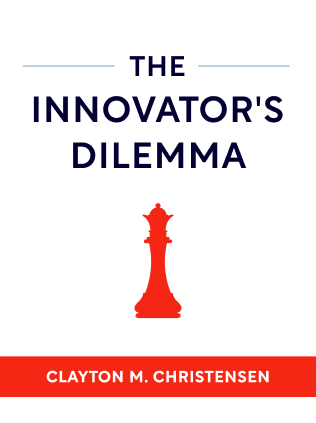

This article is an excerpt from the Shortform summary of "The Innovator's Dilemma" by Clayton M. Christensen. Shortform has the world's best summaries of books you should be reading.
Like this article? Sign up for a free trial here .
What is the impact of disruptive technology? Is there a negative impact of disruptive technology?
The impact of disruptive technology is dependent on who you ask. For customers used to the old products and the established firms providing these products, disruption is unwanted.
Read more about the potentially negative impact of disruptive technology on customers.
Customer Perspective: Impact of Disruptive Technology
Typically companies succeed by giving customers what they want—if you keep your customers happy, your profits should stay high. But, as we’ll see, disruptive innovations don’t initially appeal to a company’s current customers. There might be a negative impact of disruptive technology.
Customers’ disinterest in disruptive technologies discourages established companies from investing in developing the disruptive products, which leads to the companies’ eventual downfalls. Those companies that fail to adopt the disruptive technologies get the rug pulled out from under them later, when they discover that the disruptive products are taking over their market because the technologies have improved enough to satisfy their customers.
We’ll look at the effect of customers’ influence in the disk drive industry, which experienced an exceptionally rapid pace of change in technological advancements and market structure.
Technology Mudslide Hypothesis in the Disk Drive Industry
Disk drives are responsible for reading and writing data on computers, using the binary system of 1s and 0s. IBM produced the first disk drive in the early 1950s. The drive was called RAMAC, which stood for Random Access Method for Accounting and Control.
Soon, other companies began producing disk drives. By 1976, there was about $1 billion in disk drive production.
Between 1976 and 1995, 129 startups entered the industry. During those two decades, each crop of entrant companies quickly graduated to become established firms, as new innovations disrupted the industry—and brought new generations of entrants—at an accelerated rate. Ultimately, all but 20 of the companies failed.
Some people blamed the high rate of failure on the rapid pace of technological advancement, which far exceeded most other industries. Based on this assumption, the author developed the technology mudslide hypothesis.
The technology mudslide hypothesis stated that keeping up with the breakneck pace of change was like working against a mudslide to climb a hill: It required every ounce of companies’ focus and effort, and pausing even for a minute would mean getting buried.
However, data ultimately debunked this theory. In reality, neither the complexity nor the pace of technological advancement led to companies’ failures—it was the type of technological change that determined companies’ fates. Specifically, established companies failed when confronted with disruptive innovations.

———End of Preview———
Like what you just read? Read the rest of the world's best summary of Clayton M. Christensen's "The Innovator's Dilemma" at Shortform .
Here's what you'll find in our full The Innovator's Dilemma summary :
- Christensen's famous theory of disruptive innovation
- Why incumbent companies often ignore the disruptive threat, then move too slowly once the threat becomes obvious
- How you can disrupt entire industries yourself






